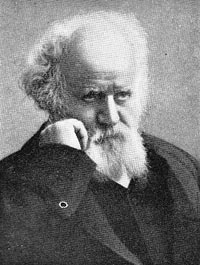It's a gas, sun
 So how about that Pierre Janssen? What, you haven’t heard of him? Why, Pierre Jules César Janssen is the French astronomer who discovered helium, on August 18 1868.
So how about that Pierre Janssen? What, you haven’t heard of him? Why, Pierre Jules César Janssen is the French astronomer who discovered helium, on August 18 1868.
OK, he discovered some other stuff too. He went to Peru to find the magnetic equator, observed a transit of Venus in Algeria, and he studied telluric absorption in the solar spectrum in Italy and Switzerland, which might seem odd since presumably “solar” means it was in the sun, but the sun is a bit hot for direct observation even by an adventurous man.
Which Janssen was. He went wherever you had to in order to study solar eclipses including Siam, as it then was, and Trani, which I don’t even know where it is, and Madras State in India, now Andhra Pradesh. And maybe he enjoyed it and maybe he didn’t. But during the Indian eclipse observations he noticed that the spectral lines (indicating chemical composition) from the sun’s prominences were so bright that they could be observed under ordinary daylight conditions. Which mattered because sometimes an eclipse just didn’t work out. Janssen actually escaped besieged Paris in 1870, during the Franco-Prussian war, by hot air balloon, to observe an eclipse in Algeria and then it got all cloudy.
Janssen was a clever as well as bold and resourceful chap. For instance he also realized it would be good to put observatories in high places so you’d be looking through less atmosphere, which led him to lobby for one atop Mont Blanc and once it was built, at age 69, he climbed up there to make observations, including I suggest the observation that he was one fit guy. But back to helium.
In his results from that 1868 Madras State observation, there was a particular bright yellow line that was eventually determined to indicate a hitherto undiscovered chemical element, the first to be detected off the Earth before being found here (which it was in 1885), helium being of course very light and also extremely non-reactive and thus not hanging around waiting for a scientist to trip over it.
Another scientist, the Englishman Joseph Norman Lockyer, also observed this bright yellow line in the solar chromosphere’s emission spectrum, and he and others worked out that it must be some unknown element, which they named helium for the obvious reason that never struck me until I researched this bit, namely that the Greek word for sun is helios. And without his work, and Janssen’s, no kid would have the brilliant experience of a lighter-than-air balloon on a string or the heartbreak of discovering just what lighter than air means if you let go. (At Disney World they tie weights to the string, in the familiar Mickey Mouse logo shape, which is surely brilliant too.)
So yes, Lockyer gets a lot of credit for helium too. But I still think August 18 is a good date to take a deep breath of the stuff and utter a comically squeaky and high-pitched hip hip hooray for Pierre Janssen.